Do Push Ups Work Biceps? Yes and No
Despite their comparatively small size, building big and strong biceps is a major goal of many at-home exercisers. So common is this training goal that there is an endless search for bodyweight exercises that target the biceps - one of which is the push-up.
Unfortunately, the majority of exercisers are mistaken in this regard, as though the biceps are recruited in an isometric capacity by push-ups - it is not significant enough to be effective in any regard.
As you can guess - push-ups do not work the biceps on account of the arm mechanics involved. However, a few small modifications to its form (or an entirely different exercise altogether) can allow calisthenic athletes and home exercisers to still target their biceps in a meaningful way.
What are Push-Ups?
Before we can learn how to modify push-ups for proper biceps activation, it is important to understand what a push-up even is.
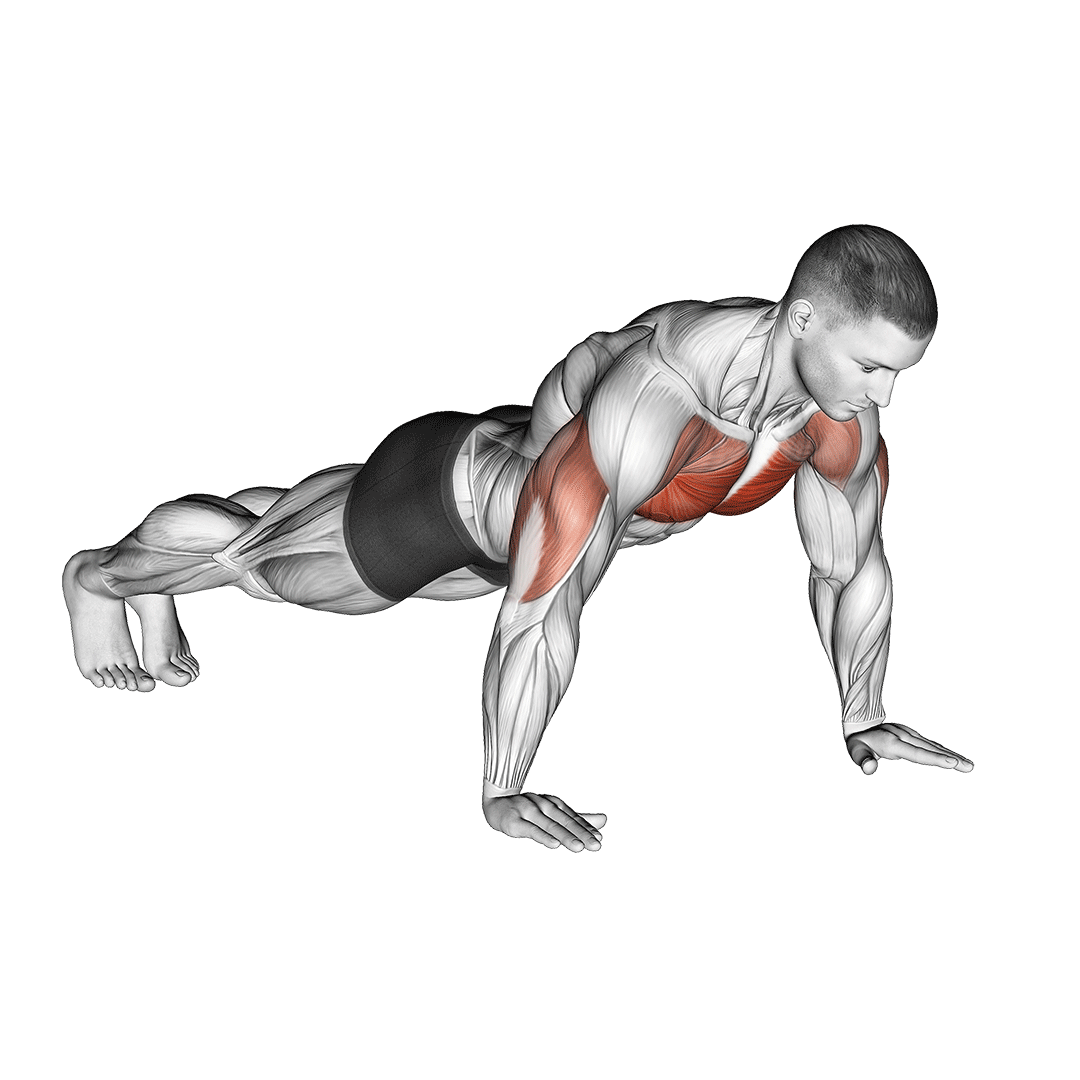
In technical terms, the push-up is a multi-joint compound exercise traditionally performed with the use of the performer’s own body as the source of resistance - often for high volume sets that are meant to induce hypertrophy alongside non-physiological athletic developments.
While push-ups are primarily used as the main compound exercise in at-home chest workouts, they also play an important role in athletic training programs and bodybuilding, wherein they provide much-needed training volume for upper body muscle groups.
What Muscles are Worked by Push-Ups?
Being a compound exercise, push-ups train more than a single muscle group throughout their range of motion - with muscles like the triceps, pectoral or chest muscles and the anterior head of the deltoids receiving the greatest benefit.
Alongside these aforementioned muscles, other parts of the body like the serratus anterior and abdominal muscles also receive some level of stimulus, albeit not to the same extent.
How are Push-Ups Performed?
To perform push-ups, exercisers will enter a plank stance on the ground, arms fully extended and set shoulder-width apart with the hands set parallel to the shoulders.
The core should remain flexed and the gluteal muscles squeezed so as to produce a rigid and flat torso.
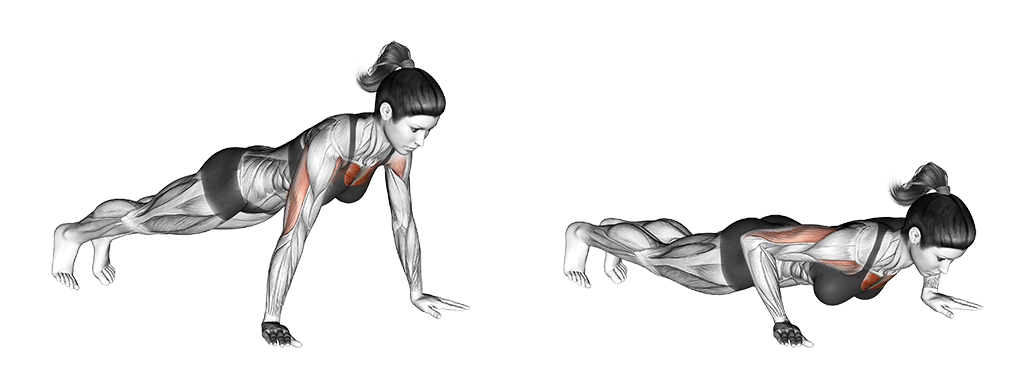
Flexing their chest, they will bend at the elbows and lower their torso until it is within several inches of touching the ground.
From this point, they will then extend their elbows once more, with the repetition having been completed once they have returned to the original plank position.
What are the Biceps Brachii?
The biceps brachii are a pair of two-headed skeletal muscles located at the anterior section of the upper arm, of which act as an antagonist to the triceps brachii and primarily connect to the radius bones of the forearm.
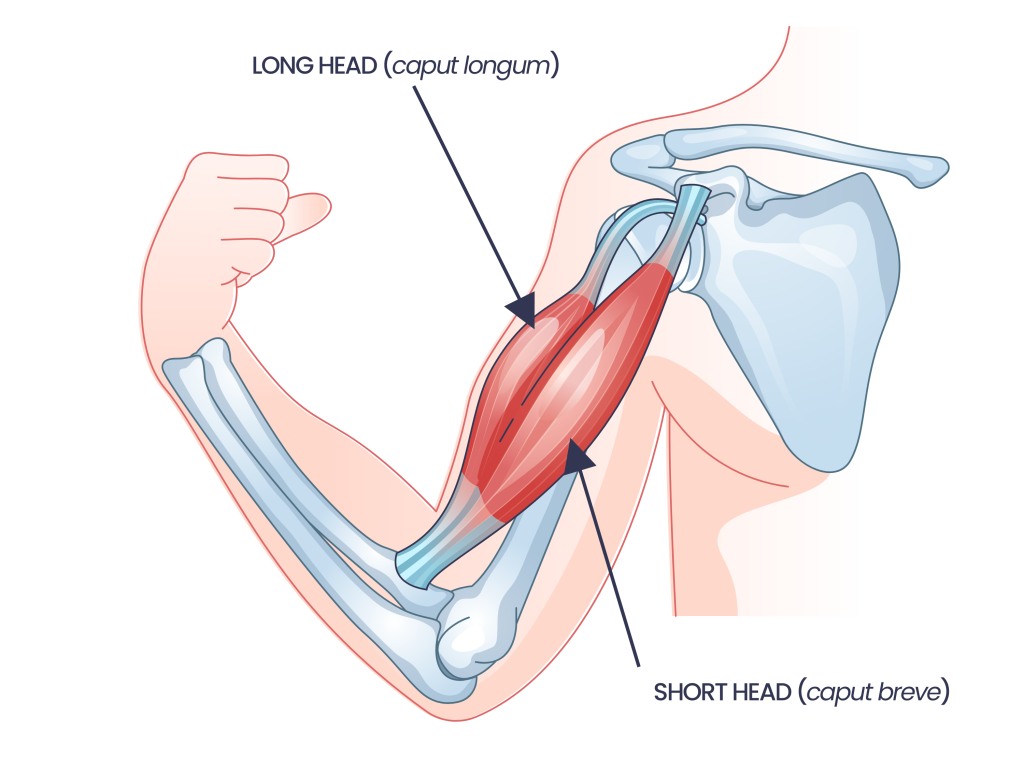
They are favored by bodybuilders for their aesthetically-pleasing appearance when contracted, and play a major role in any movement involving the lower arms.
Due to their rather unique position on the arm and their narrow list of biomechanical functions, training the biceps directly is often quite difficult without including specific biomechanics - hence the rather short list of isolation exercises for the biceps.
How are the Biceps Trained?
Training the biceps brachii is relatively simple; all that is needed is to provide counter resistance to the muscle as it is recruited in a dynamic range.
Such stimulus is seen in exercises like the bicep curl or pull-up, where the biceps are forced to contract against resistance that runs counter to their mechanical function.
This often means placing a source of resistance (i.e. a dumbbell, resistance band or even gravity) counter to the forearms as the exerciser attempts to bend their elbow - of which, one may notice, is the exact opposite of what a push-up involves.
As such, it can definitively be said that regular push-ups do not train the biceps in any manner other than a mild isometric one.
Why Don’t Push-Ups Train the Biceps?
The reason push-ups are a poor exercise for training the biceps is simple; they do not place the body in a position that requires the biceps to be significantly recruited.
The biceps are part of a group of muscles known as “elbow flexors” or “forearm flexors” meaning that the they are used to move the elbow into a state of flexion - or what is otherwise known as bending the arm.

Because push-ups do not place resistance against the elbow as it enters a state of flexion, the biceps do not need to work to maintain their primary biomechanical function, and as such will not develop from the exercise.
Fortunately, simply altering the position of the arms during a push-up is sufficient to cause biceps activation, meaning that it is technically possible to work the biceps with push-ups alone.
What Push-Up Variation Works the Biceps?
Now that we’ve established why push-ups don’t work the biceps - here are a few variations that do target them.
1. Reverse Facing Push-Ups
Also known as backward-facing push-ups, reverse facing push-ups are mechanically similar to tricep dips where the hands are extended behind and beneath the torso, with the palms pointing in the opposite direction, thereby causing the biceps to be recruited alongside the rest of the upper body.
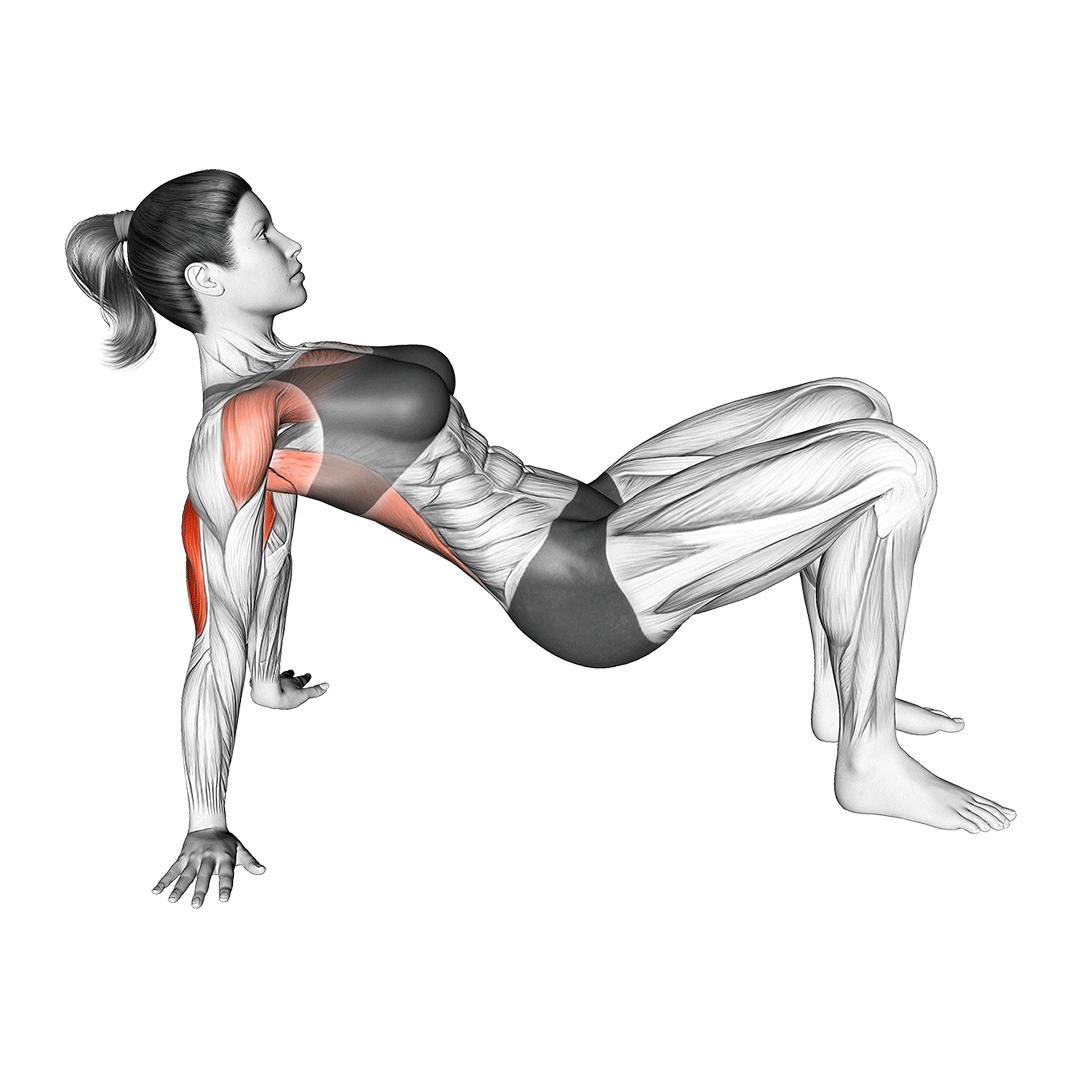
Like conventional push-ups, the reverse facing push-up is a multi-joint compound movement that is traditionally performed as a bodyweight exercise, often for high volume sets meant to elicit muscular hypertrophy in the chest, shoulders and arms.
Muscles Worked
Backward-facing push-ups train the pectoral muscles, triceps, the entirety of the deltoids, and the inner head of the biceps brachii.
How-to:
Sitting on the ground with the torso facing upwards, the knees drawn up and the feet set flat on the floor, the exerciser will set their palms on the ground behind their back. The fingers should be facing towards the legs, leaving the arms in a reversed position.
Pushing through their palms and heels, the exerciser will then raise their body upwards (as if performing a hip thrust).
Once the elbows are in a state of full extension, the exerciser will simply reverse the motion, returning the ground and thereby completing the repetition.
2. Reverse Grip Push-Ups
The traditional “biceps” push-up variation is known as the reverse grip push-up; an exercise nearly identical to conventional push-ups, only with the hands pointed in the opposite direction so as to stimulate activation across both heads of the biceps.
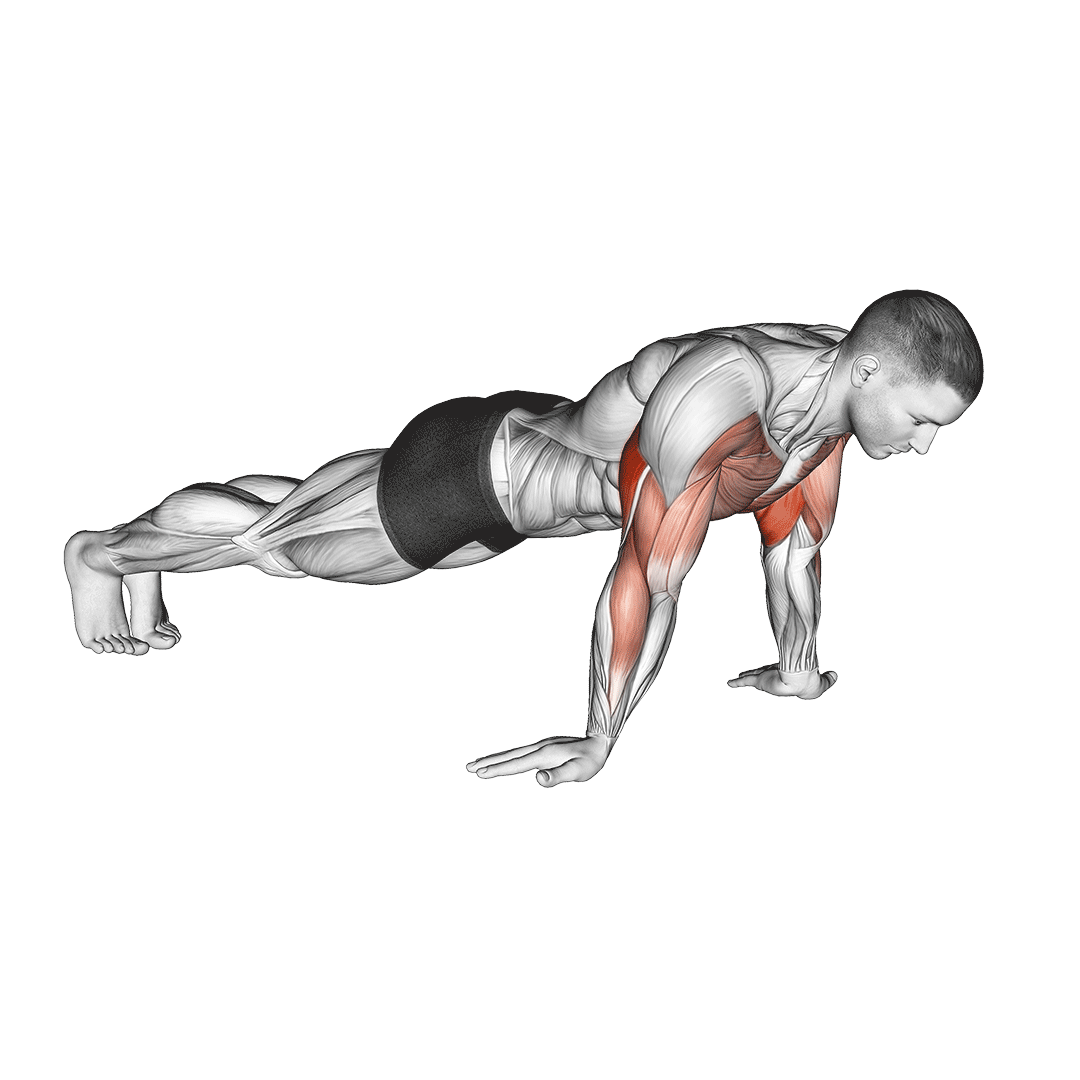
While changing the orientation of the hands in this manner may partially alienate the triceps, it is an otherwise excellent alteration for bodyweight exercisers that wish to target their biceps without the use of a pull-up bar.
Individuals with poor shoulder or wrist mobility should take extra care to adhere to correct form however, as the reverse grip push-up places even greater stress on these joints and can easily lead to injury if performed improperly.
Muscles Worked
Reverse grip push-ups train the muscles of the chest, the anterior deltoid head, the triceps brachii, the serratus anterior and both heads of the biceps brachii.
How-to:
To perform a repetition of reverse grip push-ups, the exerciser will enter a traditional plank stance on the floor, with their feet fully extended and the core contracted.
The sole difference in stance between reverse grip push-ups and conventional push-ups will be in the rotation of the hand - the fingers should be pointed towards the feet, with the elbows summarily also close to the sides of the ribcage.
For exercisers who find this stance uncomfortable, they may wish to set the hands slightly closer together, and behind the shoulders, rather than laterally parallel to them.
Once in the correct stance, the exerciser will proceed with the push-up as normal; bending at the elbows, they will lower their chest to within a few inches of touching the floor.
Pausing for a moment, they will then follow up by extending their elbows and pushing through the palms, completing the repetition once they have returned to the original plank position.
3. Archer Push-Ups
A favorite among Crossfit athletes or home exercisers who have surpassed usage of the regular push-up - archer push-ups are simply wide grip push-ups performed with the exerciser bending towards one hand, rather than between them.
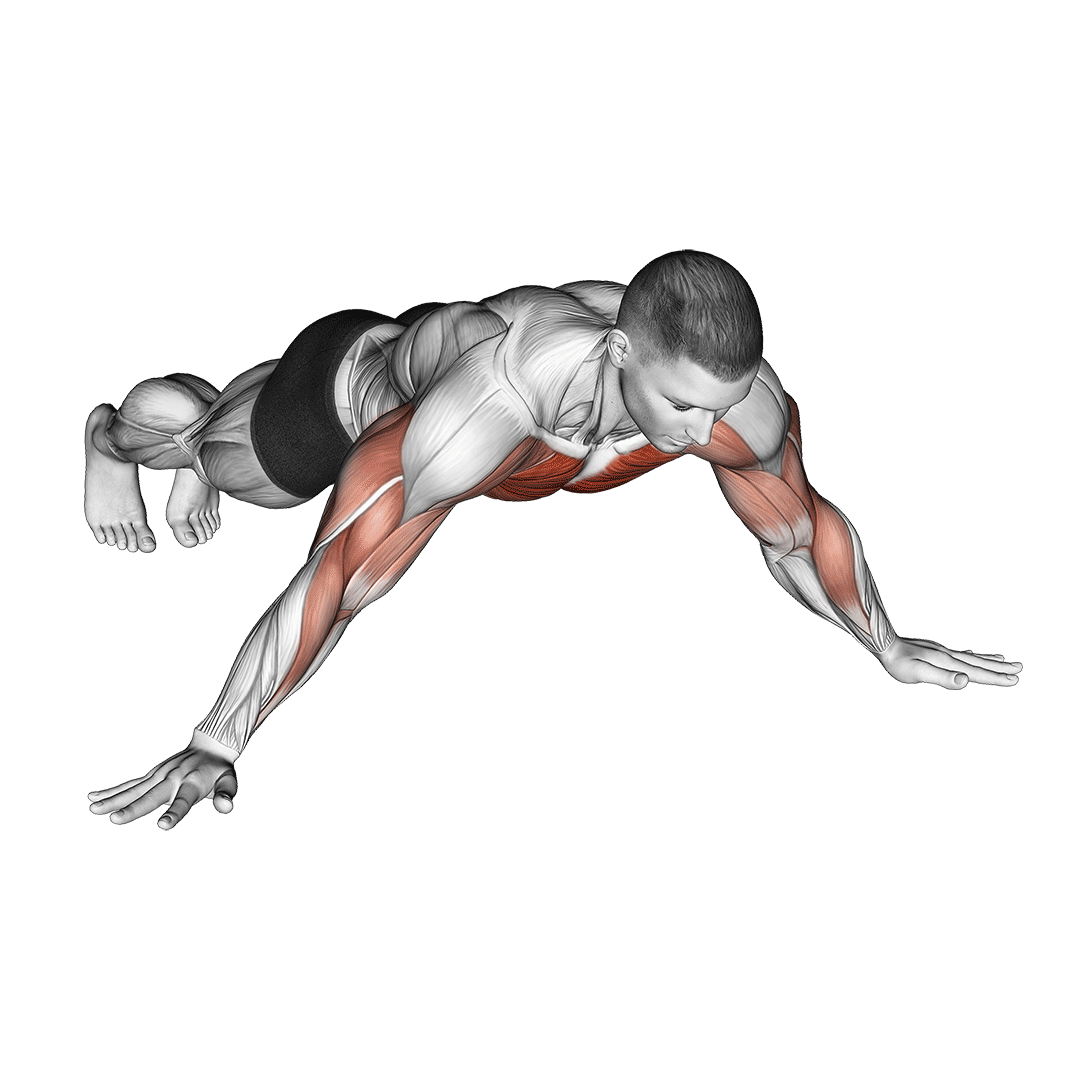
This effectively places more of the body’s weight on one arm at a time while also activating the biceps to be recruited due to the wide placement of the hands.
Muscles Worked
Archer push-ups train the pectoral muscles, the anterior head of the deltoids, the triceps brachii and the biceps brachii.
How-to:
To perform an archer push-up, the exerciser will enter a conventional plank stance, but with the hands set wider than shoulder-width apart.
Then, bending one elbow and moving the torso towards the same side, the exerciser will lower their chest next to the hand of the bent arm - stretching out the arm on the opposite side so as to maintain balance.
This portion of the movement will appear very much like a one-sided push-up, and is meant to be repeated on both sides of the body so as to avoid muscular imbalances.
From the half-sided push-up position, they will then push through the palm of the bent arm, rising and shifting the torso upwards until they have returned to the original plank position.
Once completed, they will then repeat the motion, but with the opposite side instead. When finished, the repetition may be considered complete.
4. Diamond Push-Ups
Perhaps the most simplistic push-up variation for training the biceps - the diamond push-up is mechanically and visually similar to a conventional push-up, though with the hands set close together beneath the torso, forming a diamond shape with the fingers.
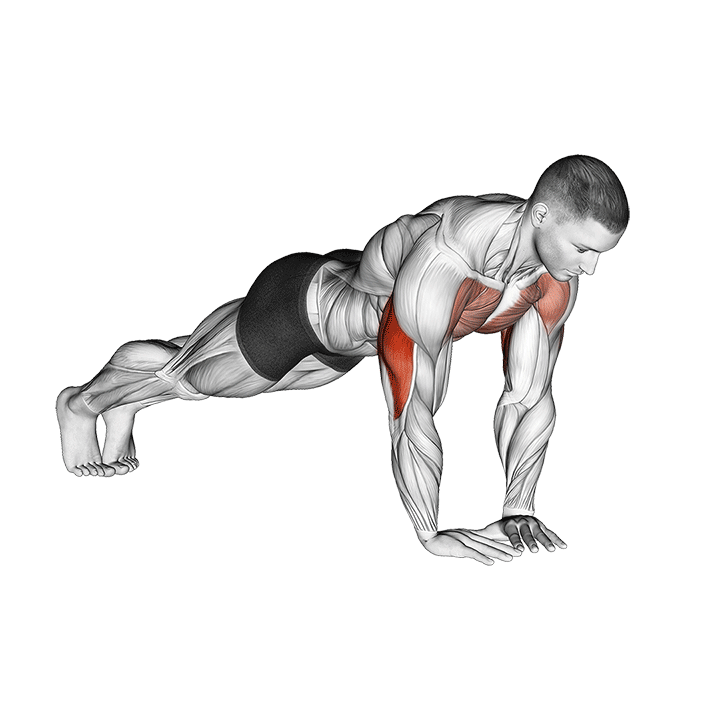
Like all other push-up variations, diamond push-ups are traditionally performed as a bodyweight exercise, and will unavoidably include training muscles other than the biceps due to their nature as a compound movement.
One may wish to note that diamond push-ups do not target the biceps as intensely as reverse grip or archer push-ups, but are nonetheless useful if supplementary biceps work is desired in a bodyweight workout.
Muscles Worked
Diamond push-ups train the triceps, pectoral or chest muscles, the anterior head of the deltoids, the trapezius and the outer or lateral head of the biceps.
How-to:
To perform a repetition of diamond push-ups, the exerciser will enter a plank stance on the ground with their hands set close together beneath the upper chest, fingers splayed and elbows fully extended.
Once in the appropriate stance, the exerciser will simply perform the push-up as normal by bending at the elbows and lowering their torso towards the floor, stopping once the chest is within several inches of touching the ground.
Then, they will push through the palms of their hands, extending the elbows and rising from the floor. The repetition is complete once they have returned to the original plank stance.
Frequently Asked Questions (FAQ)
Which Push-Up is Best for Biceps?
In truth, push-ups are a sub-optimal way of working the biceps, as there are plenty of other great bodyweight exercises that do the job in a far more efficient way.
However, if you are set on performing push-ups to hit your biceps, then exercises like the reverse grip push-up and archer push-up are the way to go.
How Many Push-Ups a Day to Get Bigger Biceps?
To the surprise of many, growing bigger muscles does not mean that they should work out every single day; In fact, doing so can potentially reduce how big your muscles grow.
Instead, aim to only perform push-ups up to 3 times a week, with at least one day of rest in between workouts involving the same muscle groups.
Will Push-Ups Make My Arms Bigger?
Yes, push-ups can make your arms bigger. Push-ups target the triceps brachii, of which makes up two-thirds of the upper arm.
Furthermore, performing the right type of push-up can also target the biceps as well - further increasing the potential for growing toned and muscular arms. For the best results, combine the right type of push-up with other exercises that also work the arms, like curls and pull-ups.
In Conclusion
So - we’ve established that regular push-ups don’t work the biceps, but variations of the push-up do.
That being said, a push-up is still a push-up, and exercisers truly seeking biceps growth may wish to instead perform other types of bodyweight exercise that target the biceps to a far greater degree.
Movements like the chin-up, inverted row and curl will all stimulate the biceps to a level that any push-up variation cannot - and are an absolute essential for proper biceps growth.
References
1. Kim YS, Kim DY, Ha MS. Effect of the push-up exercise at different palmar width on muscle activities. J Phys Ther Sci. 2016 Jan;28(2):446-9. doi: 10.1589/jpts.28.446. Epub 2016 Feb 29. PMID: 27064571; PMCID: PMC4792988.
2. Marcolin G, Petrone N, Moro T, Battaglia G, Bianco A, Paoli A. Selective Activation of Shoulder, Trunk, and Arm Muscles: A Comparative Analysis of Different Push-Up Variants. J Athl Train. 2015 Nov;50(11):1126-32. doi: 10.4085/1062-6050-50.9.09. Epub 2015 Oct 21. PMID: 26488636; PMCID: PMC4732391.
